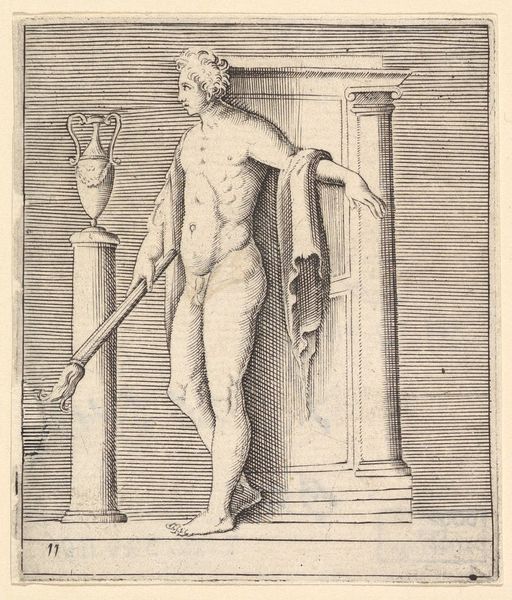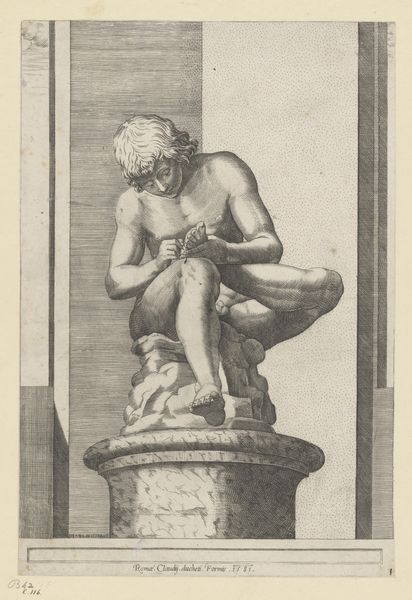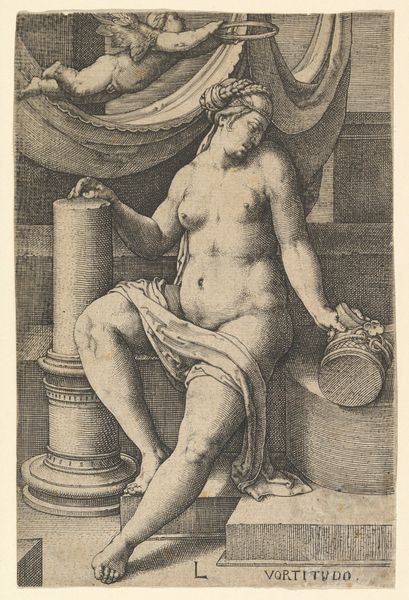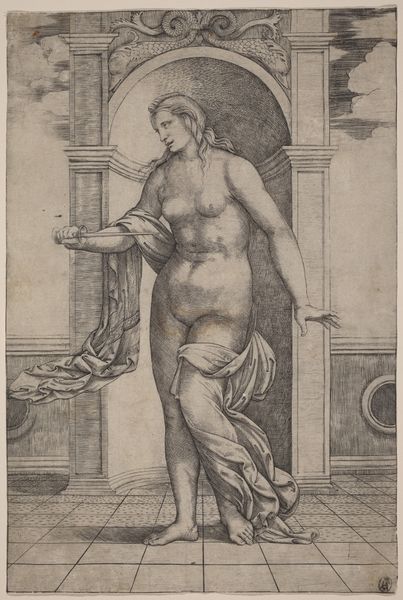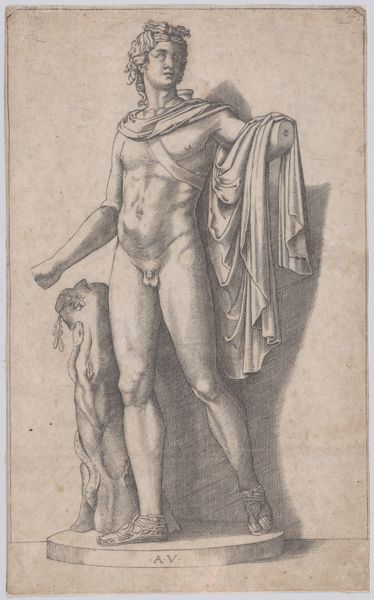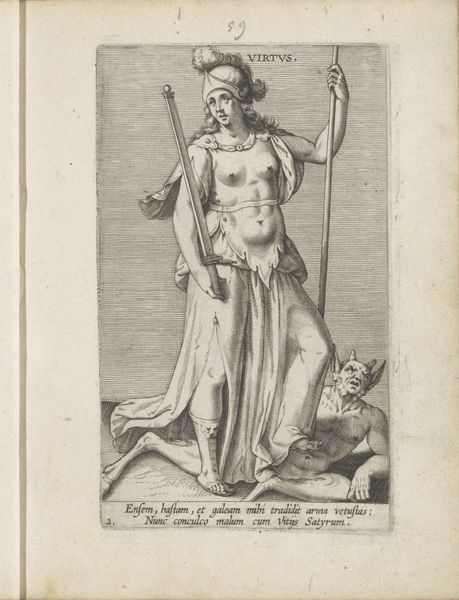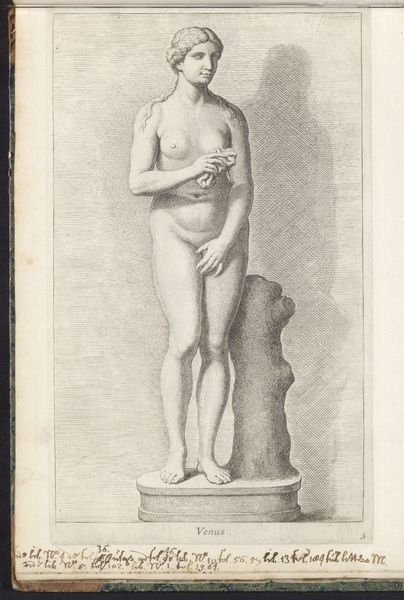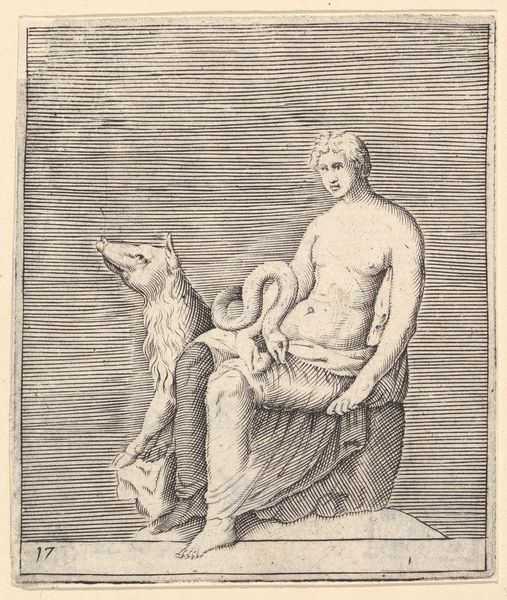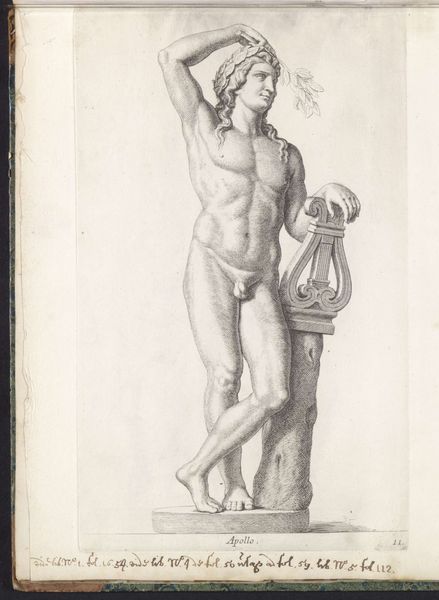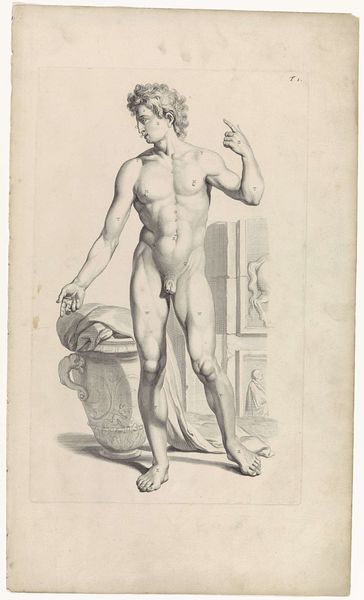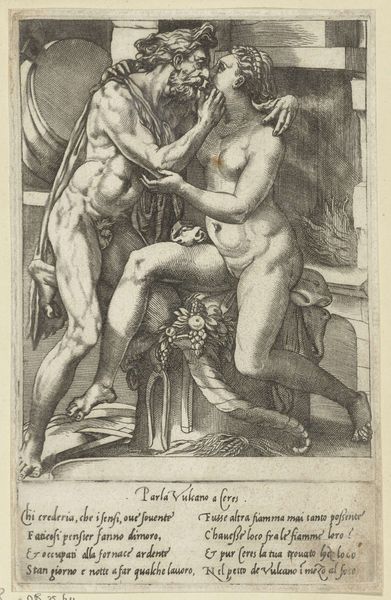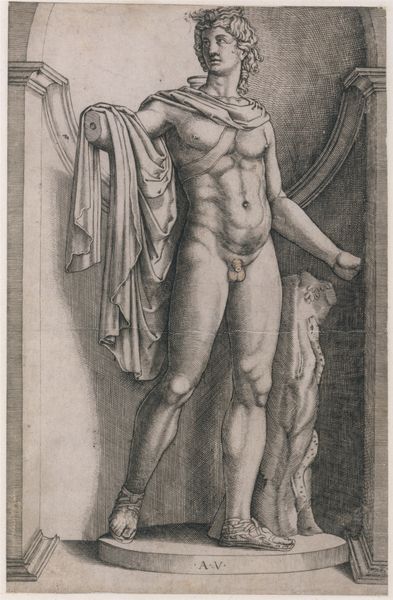
Man with Torch between Flaming Altar and Statuette, from "Ex Antiquis Cameorum et Gemmae Delineata/ Liber Secundus/et ab Enea Vico Parmen Incis" 1599 - 1622
0:00
0:00
drawing, print, intaglio, engraving
#
drawing
# print
#
intaglio
#
figuration
#
form
#
11_renaissance
#
line
#
history-painting
#
italian-renaissance
#
engraving
#
male-nude
Dimensions: plate: 3 7/16 x 4 7/8 in. (8.8 x 12.4 cm)
Copyright: Public Domain
Curator: Here we have an engraving entitled "Man with Torch between Flaming Altar and Statuette," created between 1599 and 1622 by an anonymous artist during the Italian Renaissance. Editor: Immediately I'm struck by this feeling of austere stillness—it's rendered in stark, graphic lines. The lone figure seems caught in a contemplative moment, despite being completely nude. Curator: Indeed. This piece belongs to a collection titled "Ex Antiquis Cameorum et Gemmae Delineata," showcasing imagery and forms drawn from ancient cameos and gems. Consider it part of the broader Renaissance fascination with classical antiquity, but filtered through the lens of printmaking and engraving techniques. Editor: The line work is amazing! Look how meticulously the engraver defined the figure's musculature, the folds of fabric, and even the flickering flames. It almost feels sculptural, like light and shadow are being etched into metal rather than simply drawn. But...what's he *doing*? What ritual is unfolding here? Curator: It's a good question. The piece likely depicts a scene related to ancient Roman or Greek religious practices. The statuette could represent a deity, and the flaming altar suggests a sacrificial offering or an act of worship. The man's torch perhaps symbolizes enlightenment or the divine flame. This print could be used for visual study and collecting as a visual record of these ritual object depicted and known during this era. Editor: I love that duality – divine presence alongside intellectual understanding. There is tension between flesh and stone; something so organic right beside something rigid. He's not a perfect idealized body we might expect in Renaissance art, he’s all sinewy and real. Maybe he’s also just feeling a little awkward standing around naked by the alter! Curator: He is definitely rendered in very fine detail. But these kinds of engravings served practical purposes as well, allowing knowledge about classical culture and imagery to spread to a wider audience beyond just the wealthy elite. Editor: I always appreciate that democratization of art. Even now, centuries later, we’re engaging with this depiction thanks to those original engravings. Thanks for sharing your expertise with me, it helps connect the dots to where art history comes from. Curator: My pleasure. It's through this sort of contextualizing that these images continue to illuminate facets of both past and present.
Comments
No comments
Be the first to comment and join the conversation on the ultimate creative platform.
